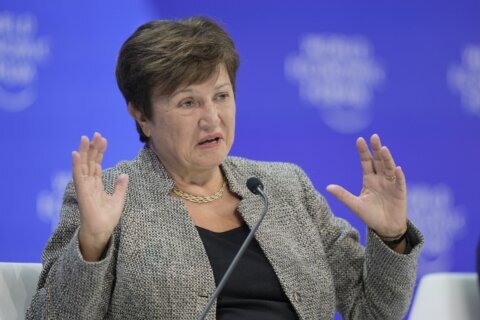A gym membership in the United States typically costs around $50 a month. Boutique gyms and high-intensity classes run double and triple that.
Planet Fitness, however, has offered $10 monthly memberships for 30 years. The no-frills gym chain hasn’t raised the price, making it one of the few things that still costs the same despite the highest inflation in decades.
Planet Fitness blares out the $10 gym plan, which includes annual fees and free training, in commercials, and the company has long sponsored the New Year’s Eve celebration in Times Square to get people thinking about signing up for memberships as their resolution.
That almost sacrosanct $10 price has become a key part of the company’s brand positioning as an accessible, “judgment-free” club conducive to casual gym goers. Planet Fitness members typically go five or six times a month, and around 60% of them don’t visit in a 30-day stretch.
“It’s a very powerful marketing tool,” said Simeon Siegel, who covers the company at BMO Capital Markets. The $10 price is right in the sweet spot, he said: cheap enough to draw people to Planet Fitness who want to get in shape and, equally as important, not so expensive that they will cancel if they don’t go often.
For $10 a month, infrequent users are likelier to hold onto the membership to say they belong to a gym rather than quit, he said.
Planet Fitness uses $10 dues, which can be canceled at anytime, to recruit people who are interested in exercising, but have never joined a gym before, are intimidated by fitness fanatics at other gyms or can’t afford pricier clubs. The company believes $10 is an entryway for the roughly 80% of Americans who don’t belong to a gym.
This inexpensive gym membership model — known in the fitness industry as high volume, low price, or “HVLP” — is also tailored to appeal to high-school students accompanied by a parent, college students and people recovering from an injury or surgery, said Rick Caro, the president of Management Vision and longtime fitness industry consultant.
“It’s a ‘get you off the couch’ price,” said Christopher Rondeau, the chief executive of Planet Fitness, which has grown to more than 2,300 gyms nationwide and reached a record-high 16.6 million members last quarter. “You’re not going to give something a try for the first time and spend $50, $60, $70,” he said.
Planet Fitness does not plan to raise the $10 price anytime soon. Instead, it will hold down the price by getting people to trade up to its $24.99 monthly “Black Card” membership with more perks.
“The longer I can stay at $10 the better off I am to get people off the couch, give fitness a try and continue to drive more value in the Black Card,” said Rondeau.
The higher-priced monthly plan offers access to all of Planet Fitness’ gyms and perks like water massage beds, massage chairs and tanning equipment, and Black Card members can also bring a visitor.
More than 60% of members subscribe to this tier, which Planet Fitness increased by $2 a month earlier in the year. The average Planet Fitness member pays around $17.60 a month, helping the company keep the lower plan at $10.
“It’s not that different from other businesses that entice you with a low price point and then upsell you with higher options,” said Joseph Altobello, an analyst at Raymond James.
To appeal to occasional gym goers, Planet Fitness’ clubs also have more cardio and light strength equipment than many competitors and fewer heavy free weights. Planet Fitness discourages what it calls “lunk” behavior, such as dropping weights and grunting, and has a “lunk alarm” to prevent people from dropping them.
Planet Fitness has benefited from the consolidation of the fitness industry during the pandemic, which has left the company with fewer budget-gym competitors.
Around 25% of US gyms and studios permanently closed during the pandemic — roughly 10,000 facilities, according to the industry trade group. Several major chains, including 24 Hour Fitness and Gold’s Gym, filed for bankruptcy.
Planet Fitness, however, did not permanently close any gyms during the pandemic. This was in large part due to its franchise gym model, with some of the gyms owned by private-equity groups.
The company has also capitalized on Americans looking to get in shape in the aftermath of the pandemic. Monthly visits to US gyms are higher than they were in 2019, according to Placer.ai, which tracks foot traffic to retailers.
Despite the rise of Peloton and the at-home workouts many people got used to during pandemic lockdowns, at-home exercise is not a threat to Planet Fitness’ $10 model.
“It’s a different customer,” Altobello said. “Not everyone has the money or the space to create an at-home gym.”







